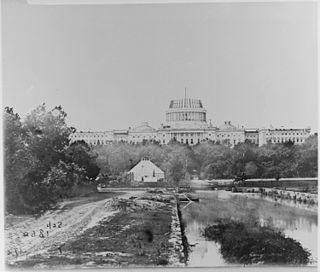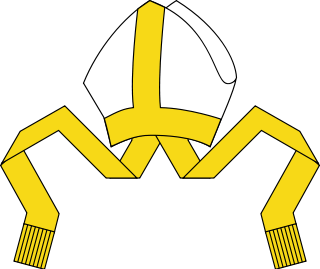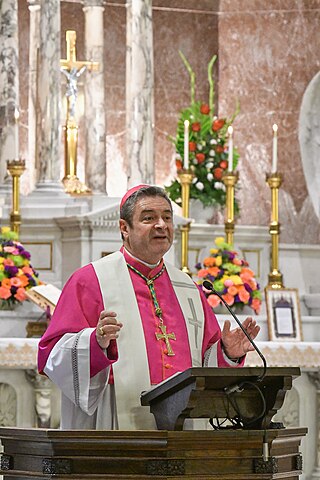The following articles contain lists of resignations:
Specific resignations:

The 10th United States Congress was a meeting of the legislative branch of the United States federal government, consisting of the Senate and the House of Representatives. It met in Washington, D.C., from March 4, 1807, to March 4, 1809, during the seventh and eighth years of Thomas Jefferson's presidency. The apportionment of seats in the House of Representatives was based on the 1800 census; both chambers had an overwhelming Democratic-Republican majority.

The 11th United States Congress was a meeting of the legislative branch of the United States federal government, consisting of the United States Senate and the United States House of Representatives. It met in Washington, D.C., from March 4, 1809, to March 4, 1811, during the first two years of James Madison's presidency. The apportionment of seats in the House of Representatives was based on the 1800 United States census. Both chambers had a Democratic-Republican majority.

The 19th United States Congress was a meeting of the legislative branch of the United States federal government, consisting of the United States Senate and the United States House of Representatives. It met in Washington, D.C. from March 4, 1825, to March 4, 1827, during the first two years of John Quincy Adams's presidency. The apportionment of seats in the House of Representatives was based on the 1820 United States census. The Senate had a majority of Jackson Men, while the House had an Anti-Jackson (pro-Adams) majority.

The 25th United States Congress was a meeting of the legislative branch of the United States federal government, consisting of the United States Senate and the United States House of Representatives. It met in Washington, D.C. from March 4, 1837, to March 4, 1839, during the first two years of Martin Van Buren's presidency.

The 29th United States Congress was a meeting of the legislative branch of the United States federal government, consisting of the United States Senate and the United States House of Representatives. It met in Washington, D.C. from March 4, 1845, to March 4, 1847, during the first two years of James Polk's presidency. The apportionment of seats in the House of Representatives was based on the 1840 United States census. Both chambers had a Democratic majority.

The 30th United States Congress was a meeting of the legislative branch of the United States federal government, consisting of the United States Senate and the United States House of Representatives. It met in Washington, D.C. from March 4, 1847, to March 4, 1849, during the last two years of the administration of President James K. Polk. The apportionment of seats in the House of Representatives was based on the 1840 United States census. The Senate had a Democratic majority, and the House had a Whig majority. It was the only Congress in which Abraham Lincoln served.
Resignation is the formal act of leaving or quitting one's office or position. A resignation can occur when a person holding a position gained by election or appointment steps down, but leaving a position upon the expiration of a term, or choosing not to seek an additional term, is not considered resignation.
A papal renunciation also called a papal abdication, occurs when the current pope of the Catholic Church voluntarily resigns his position. As a pope's time in office has conventionally lasted from his election until his death, a papal renunciation is an uncommon event. Before the 21st century, only five popes unambiguously resigned with historical certainty, all between the 10th and 15th centuries. Additionally, there are disputed claims of four popes having resigned, dating from the 3rd to the 11th centuries; a fifth disputed case may have involved an antipope.

The 35th United States Congress was a meeting of the legislative branch of the United States federal government, consisting of the United States Senate and the United States House of Representatives. It met in Washington, D.C. from March 4, 1857, to March 4, 1859, during the first two years of James Buchanan's presidency. The apportionment of seats in the House of Representatives was based on the 1850 United States census. Both chambers had a Democratic majority.
The Prime Minister's Resignation Honours in the United Kingdom are honours granted at the behest of an outgoing prime minister following their resignation. In such a list, a prime minister may ask the monarch to bestow peerages, or lesser honours, on any number of people of their choosing. In 1997, an additional 47 working peers were created at the behest of the three main parties.
The following lists events that happened during 1869 in New Zealand.

Robert Henry Brom was an American prelate of the Catholic Church. He served as bishop of the Diocese of Duluth in Minnesota, from 1983 to 1989, and as bishop of the Diocese of San Diego in Southern California from 1990 to 2013.

Robert Patrick Maginnis was an American prelate of the Roman Catholic Church. He served as an auxiliary bishop of the Archdiocese of Philadelphia from 1996 to 2010.

Josu Iriondo is a Spanish-born American prelate of the Roman Catholic Church who served as an auxiliary bishop of the Archdiocese of New York from 2001 to 2014.

Robert Edward Mulvee was an American prelate of the Roman Catholic Church.

Robert John Brennan is an American prelate of the Catholic Church who has served as bishop of the Diocese of Brooklyn in New York City since 2021. Previously he served as an auxiliary bishop of the Diocese of Rockville Centre in New York from 2012 to 2019, and as bishop of the Diocese of Columbus in Ohio from 2019 to 2021.
Crown Honours Lists are lists of honours conferred upon citizens of the Commonwealth realms. The awards are presented by or in the name of the reigning monarch, currently King Charles III, or his vice-regal representative.
The 1990 Hackney Council election took place on 3 May 1990 to elect members of Hackney London Borough Council in London, England. The whole council was up for election and the council remained controlled by Labour.

The 2022 Prime Minister's Resignation Honours are honours awarded following the September 2022 resignation of the Prime Minister, Boris Johnson.